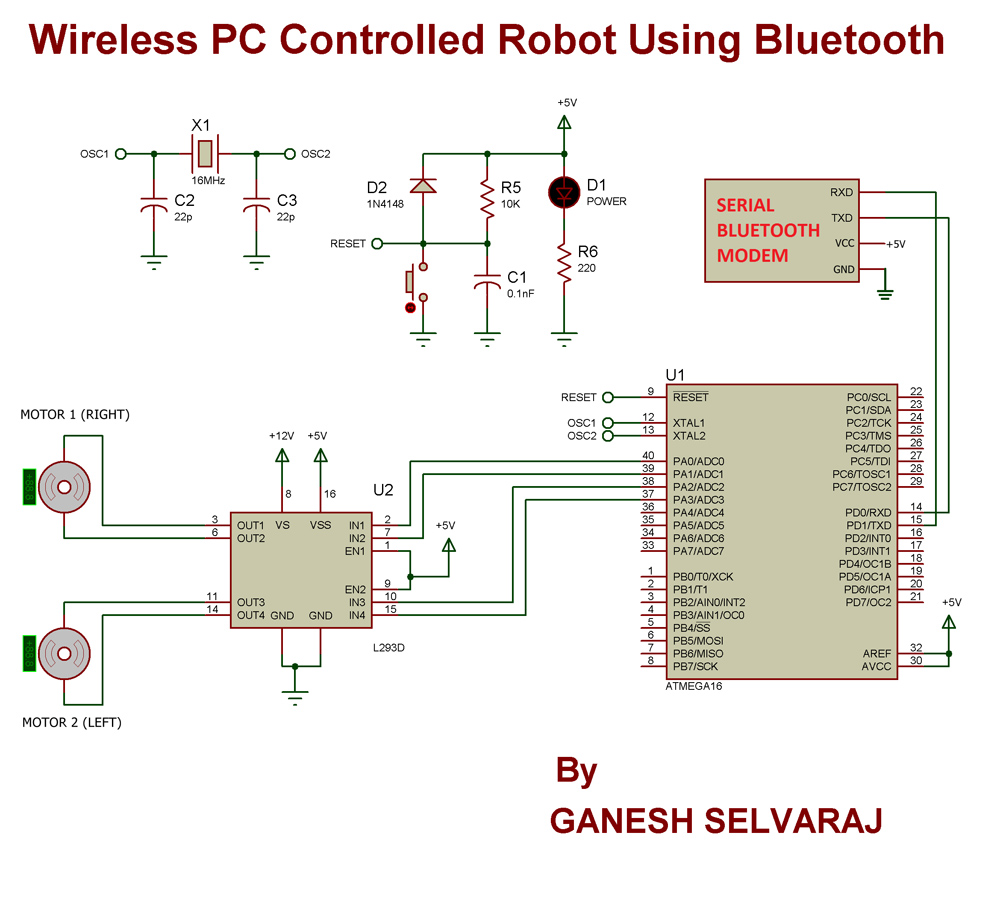This project demonstrates how pulses can be transmitted from one place to another place wirelessly using light as medium. One LED is connected at the transmitter side that blinks at frequency of applied pulses. At the receiver side, Light Dependent Resistor (LDR) is used to receive light pulses. IC555 is used at both ends. At transmitter side it is used to generate continuous pulses with variable frequency output from 1 Hz to 10 Hz. At receiver side it is used to generate same pulses as per the trigger input applied by LDR.
Note – for visual effect (demonstration) the pulse frequency is kept low. The frequency can be kept high in terms of KHz also.
Transmitter
IC555 is connected in astable mode to generate continuous pulses. The max and min pulse frequencies are calculated as
Fmin = 1.44 / (R1 + 2×(R2+R3max))×C1
Substituting values as per the circuit diagram
= 1.44 / (4700 + 2×(4700+50000)×10×10-6
= 1.2 Hz
Similarly
Fmax = 1.44 / (R1 + 2×(R2+R3min))×C1
= 1.44 / (4700+2×(4700+0)) ×10×10-6
= 10.2 Hz
These pulses are applied to super bright white LED. So it will blink at a rate of 1 Hz to 10 Hz.
Receiver – IC555 is connected in monostable mode. R5 and C3 are timing components. So output pulse time is
T = 1.1×R5×C3
As per given values
= 1.1×1000×0.1×10-6
= 1.1×10-4
= 0.11 ms
That means output pulse time is very short and it tries to follow applied trigger input – which means till the time trigger input is low, the output remains high.
The LDR with 10K resistor is connected in such a way that when light pulse falls on it – it gives trigger pulse to IC555. The required triggering voltage for IC555 is Vcc / 3. If voltage at pin no 2 of IC555 is more than Vcc/3 then no trigger. But as the voltage falls below Vcc/3, the trigger is applied and output goes high.
Let us see how this happens.
In the room light the LDR resistance is 15K. When strong light (like light of super bright LED) directly falls on it, its resistance decreases to 1K. So in the room light when the LDR resistance is 15K the trigger voltage Vt is
Vt = (LDR / R6+LDR)×Vcc
= (15 / 15+10) ×Vcc
= 3/5 Vcc > Vcc / 3
So in room light IC555 does not get any trigger from LDR. But as light pulse from LED falls on it its resistance decreases to 1K. So the trigger voltage will be
Vt = (1 / 1+10) ×Vcc
= Vcc / 11 << Vcc / 3
So IC555 gets the trigger and its output goes high and remains high till the duration of light pulse. So the LED at receiving side also blinks at the same rate of transmitter LED.
Circuit Operation
· First supply is given to the receiver because no direct light is falling on LDR, the receiver output is low and receiver LED is off
· Next when the supply is given to the transmitter, the LED starts blinking
· The transmitter LED is pointed towards LDR
· So the LDR receives direct light and it generates trigger pulse to IC555
· IC555 gives high output till the duration of the light pulse
· So the transmitter LED and receiver LED blinks at the same rate with same frequency
· As the blinking rate of transmitter LED is varied using pot R3, the blinking rate of receiver LED also changes
Circuit Diagrams
Project Components
Project Video
Filed Under: 555 Timers, Electronic Projects
Filed Under: 555 Timers, Electronic Projects



Questions related to this article?
👉Ask and discuss on Electro-Tech-Online.com and EDAboard.com forums.
Tell Us What You Think!!
You must be logged in to post a comment.